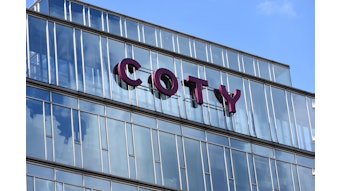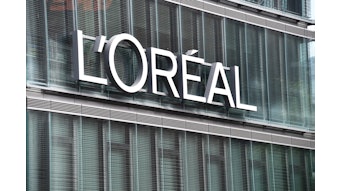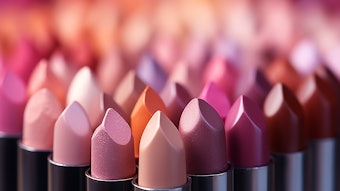- Men’s grooming is expected to grow to $42.2 billion by 2018, 20% higher than the current value.
- Capturing a niche consumer group, such as men that shave their body, may be key to growth in mature markets.
- Identifying benefits that consumers view as real added value is key to winning on a strategy of introducing higher price shaving products.
Gillette is the undisputed king of the shaving world, holding over 27% of the total men’s grooming category and over 65% of razors and blades in 2013. However, the brand has been losing ground across all regions with the exception of Latin America—indicating that, despite the big gap from its competitors, it is struggling to maintain position. While it has even been losing ground in the fast-growing Middle East and Africa and Asia Pacific regions, it is its vulnerability in its home market that is most worrying for the company. In the U.S., its share declined from 73% in 2008 to 66% in 2013. It is then of no surprise that the company has been looking at ways to boost its competitiveness in the world’s largest shaving market.
Beards Become in Vogue
The biggest issue for both Gillette and its razor competitors has been the rise of the beard trend. The high cost of shaving, a growing acceptance for unshaven faces in business settings and the fashion trend for hipster beards all contributed to the slowdown of razor and blade sales. The slowdown has been most pronounced in Western Europe, where the market remained static, and in North America, where razors and blades declined for the first time since the height of the recession. In Europe, the hipster beard trend has been especially strong in the U.K. (London in particular) and France, where companies have been launching products for the three-day beard trend. Southern Europe has always traditionally been a big shaving market, but high unemployment coupled with the high cost of shaving and a more relaxed attitude to business dress code has resulted in declines for razors and blades.
The U.S. not only declined for the first time in 2013 but also lost its place as the world’s biggest razor and blade market to Brazil. Brazil is traditionally a high consumption/low cost market, and therefore remains dominated by disposables, which account for over 70% of sales of razors and blades. However, its dependence on disposables is actually in decline, with system razors increasing from 10% in 2008 to 13% in 2013. In contrast, in the U.S. (traditionally a premium market) the increasing sophistication of disposables such as Bic and the rise of subscription players like Dollar Shave Club have rejuvenated sales of disposables, which reached nearly 31% of total sales in 2013. Both system razors and system refills are losing share. Gillette’s 2014 introduction of a subscription program in the U.S. demonstrates that the company is looking at these players and the rise of disposables as detrimental to its dominance.
Can Innovation Win Back the Edge?
Gillette has been on a roll in terms of innovation, introducing Fusion ProGlide Power to the Fusion Pro Glide Styler line in 2013, both engineered to work with stubble and beard to trim and style rather than shave. Both of Gillette’s offerings have been claimed as successful despite their high price compared to ordinary razors. While that may indicate that some consumers are willing to pay for products that offer perceived value, their popularity and higher price have done little to stop Gillette’s declining U.S. sales.
As a result, Gillette’s innovation team is looking to expand its consumer base by capturing a niche but, according to the company, growing consumer group: men who shave their body. In early 2014, Gillette announced the launch of Gillette Body, a razor that created for “manscaping.” Given the niche consumer bracket it targets, it is not the solution to Gillette’s falling sales. Most importantly, it is a product that consumers will find harder to identify as having added value when compared with regular razors, disposables and depilatories that consumers have already been using for body shaving/hair removal.
In April 2014, Gillette introduced Fusion ProGlide with FlexBall Technology, inspired by the upmarket vacuum cleaner Dyson and featuring a rolling ball that helps it pivot in every direction. It is the first time in more than 30 years that Gillette has changed the handle of its razors. And the new razor is in line with the company’s premium strategy, with a price point higher than the average system razor. While Fusion ProGlide claims to offer a premium shaving experience, shaving remains a tedious, necessary activity for most men. Though a product that helps significantly shorten the process can have added value for consumers, if a daily shave is still required and the difference between the processes is just 30 seconds, it is questionable whether one would pay $15 instead of $3 for a product that, more or less, does the same job.
Ongoing Fight for Domination in Men’s Grooming
Men’s grooming is expected to become a $42.2 billion industry by 2018, an accumulative 20% higher than its current value. Shaving will remain just under half of that, with razors and blades the largest category. As a result, the competition between brands for a piece of the revenue pie will only intensify.
While Brazil and India are strong markets for Gillette in its global strategy, it needs to stabilize things at home. Innovation on the higher end has, as of yet, done little to stop decline in sales. And, moreover heavy, promotions by retailers further undermine the brands profits. As competitors from Wilkinson Sword to Bic are getting a stronger hold of the market, Gillette needs to perhaps rethink its strategy about premium shaving. Are these premium products really improving shaving experience enough for consumers to trade up?
Nicole Tyrimou is a Euromonitor International beauty and personal care analyst.










